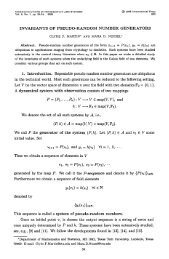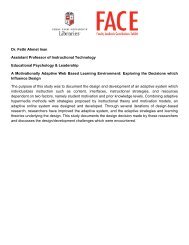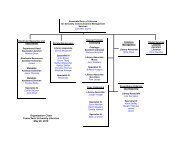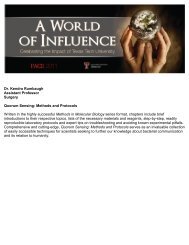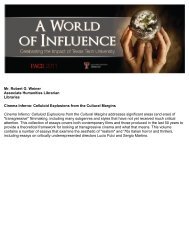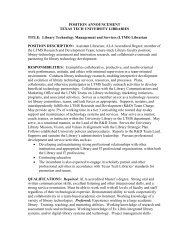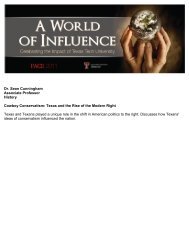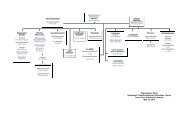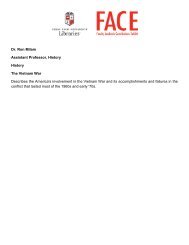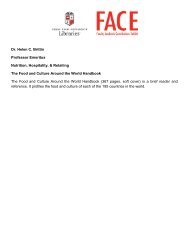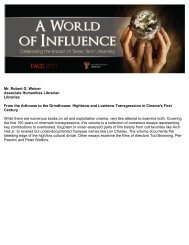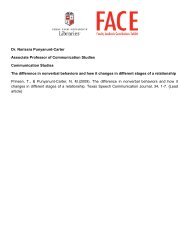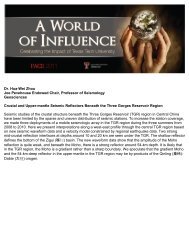Nonprofit Organizations Law and Policy Third Edition - Libraries ...
Nonprofit Organizations Law and Policy Third Edition - Libraries ...
Nonprofit Organizations Law and Policy Third Edition - Libraries ...
Create successful ePaper yourself
Turn your PDF publications into a flip-book with our unique Google optimized e-Paper software.
18 OVERVIEW OF THE NONPROFIT SECTOR CH.l<br />
The first portion of the regulation relied upon to deny BMR, Inc.'s<br />
request for tax-exempt status measures an applicant organization by<br />
whether it provides "instruction of the public on subjects useful to the<br />
individual <strong>and</strong> beneficial to the community." Treas.Reg. § 1.501(c)(3)l(d)(3)(i)(b)<br />
(1959). The district court rejected that test with barely a<br />
murmur of disagreement from appellees. That st<strong>and</strong>ard, held the court<br />
below, "would be far too subjective in its application to pass constitutional<br />
muster." * * *<br />
We find similar problems inherent in the "full <strong>and</strong> fair exposition"<br />
test, on which the district court based affirmance of the IRS's denial of<br />
tax-exempt status to BMR, Inc. That test lacks the requisite clarity, both<br />
in explaining which applicant organizations are subject to the st<strong>and</strong>ard<br />
<strong>and</strong> in articulating its substantive requirements.<br />
A. Who is Covered by the "Full <strong>and</strong> Fair Exposition" Test?<br />
According to the terms of the Treasury regulation, only an organization<br />
that "advocates a particular position or viewpoint" must clear the<br />
"full <strong>and</strong> fair exposition" hurdle. Appellant maintains that the definition<br />
of an advocacy organization is to be found in the preceding subsection of<br />
the regulation, which defines the term "charitable": The fact that an<br />
organization, in carrying out its primary purpose, advocates social or civic<br />
changes or presents opinion on controversial issues with the intention of<br />
molding public opinion or creating public sentiment to an acceptance of its<br />
views does not preclude such organization from qualifying under section<br />
501(c)(3) so long as it is not an "action" organization of anyone of the<br />
types described in paragraph (c)(3) of this section. Treas.Reg.<br />
§ 1.501(c)(3)-l(d)(2) (1959). The district court held that this part of the<br />
regulation was designed to cover charitable institutions <strong>and</strong> that BMR,<br />
Inc., an educational rather than a charitable organization, must meet the<br />
"full <strong>and</strong> fair exposition" st<strong>and</strong>ard rather than the more lenient "action<br />
organization" st<strong>and</strong>ard of section 1.501(c)(3)-l(d)(2). Obviously, if BMR,<br />
Inc. is an advocacy group <strong>and</strong> is not a charitable organization, it may not<br />
take cover under the "action organization" st<strong>and</strong>ard but must instead<br />
meet the "full <strong>and</strong> fair exposition" test.<br />
The initial question, however, is whether or not BMR, Inc. is an<br />
advocacy group at all. What appellant turns to Treas.Reg. § 1.501(c)(3)l(d)(2)<br />
for is the definition of "advocacy," not for the appropriate st<strong>and</strong>ard<br />
to be applied to advocacy organizations seeking tax-exempt status.<br />
The district court did not deal with that question, <strong>and</strong>, indeed, it is<br />
difficult to ascertain from the language of the regulation defining "educational"<br />
exactly what organizations are intended to be covered by the<br />
"full <strong>and</strong> fair exposition" st<strong>and</strong>ard <strong>and</strong> whether or not the definitions of<br />
advocacy groups are the same for both educational <strong>and</strong> charitable organizations.<br />
The uncertainty of the coverage of the "full <strong>and</strong> fair exposition"<br />
st<strong>and</strong>ard is evidenced by its application over the years by the IRS. The<br />
Treasury Department's Exempt <strong>Organizations</strong> H<strong>and</strong>book has defined "ad-



